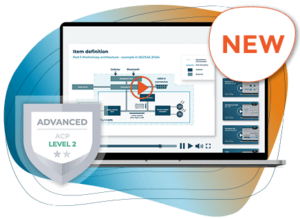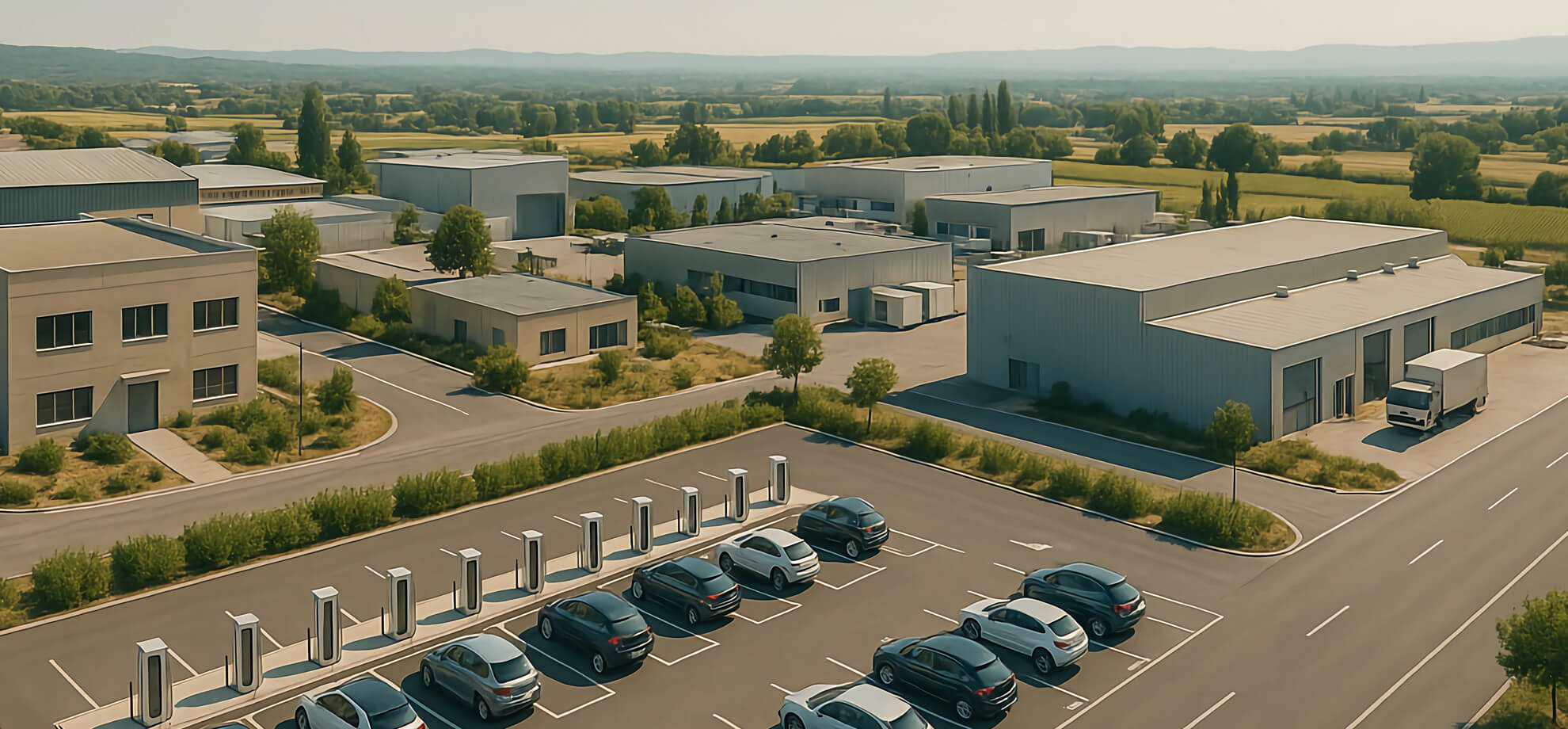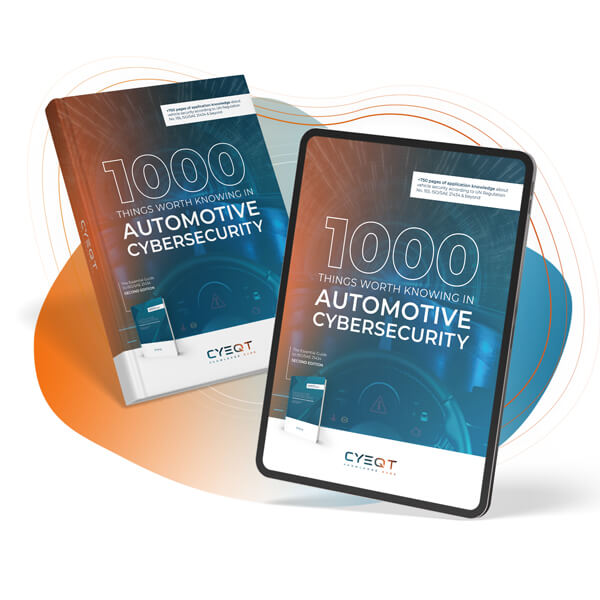Cybersecurity is considered by pretty much every development engineer or project manager in the automotive industry and vehicle development primarily as a necessary evil. A resource-intensive cost factor. A burden on development processes, schedules, and budgets. However, this perspective falls short. When implemented correctly, modern cybersecurity engineering becomes an efficiency booster: It structures development processes, reduces expensive rework, and can contribute significantly to a shorter time-to-market. Instead of treating security as a downstream compliance task, organizations, decision-makers, and development projects should understand it as a strategic competitive advantage. This article aims to shed light on how a supposed cost driver can become a tangible business enabler that can save millions.
Philipp Veronesi
When it comes to cybersecurity in vehicle development, many immediately think of defensive measures against hackers. Or of the many regulatory obligations and requirements. But this perspective is no longer contemporary.
The necessary shift in perspective on cybersecurity in the automotive industry
Today, the vast field of cybersecurity is no longer an IT or compliance issue — it has grown into a strategic lever for reducing costs and increasing efficiency throughout the entire product lifecycle, from development to field deployment.
The automotive industry is facing enormous challenges: the transformation of architectures toward the Software-Defined Vehicle, the increasing complexity of E/E components, the slowing down of legacy patchwork solutions, and the immense cost pressure, to name just a few. At the same time, it is necessary to meet the regulatory requirements that have grown rapidly worldwide in recent years, specifically in matters of cybersecurity.
Anyone who views cybersecurity engineering as a burden is wasting enormous potential. Because: Every vulnerability closed early, every standardized procedure, and every avoided rework saves real money. Headlines about cybersecurity incidents involving the vehicle ecosystem and the associated expenditures by the involved OEMs and suppliers regularly demonstrate this.
Those who understand cybersecurity today as a non-negotiable integral part of engineering and project management not only gain security, but also time and budget advantages that directly impact business success.
Just as competence in software development was long underestimated in the automotive sector and is today an immense competitive advantage, it is becoming increasingly clear that cybersecurity — especially with regard to autonomous driving and new connectivity functions — will be the supreme discipline of the future.
Cost levers in development: Where does cybersecurity offer concrete savings?
Critics are initially right: Proper consideration of cybersecurity initially means additional work. Time-consuming risk analyses, complex reviews, resource-intensive implementation of security requirements. But it is precisely these steps that also offer the potential to sustainably reduce development costs.
Here, it is one of the primary duties of cybersecurity managers to look beyond their own horizons. To act as a bridge between the (often quite detail-loving) profession of security and hard-nosed business economics.
Increasing the maturity of one’s own cybersecurity: Where cybersecurity can become a game changer
For all those who view vehicle development primarily through the business lens, whereby cybersecurity is quickly categorized as a technical side issue, the following principle should be highlighted: The actual value-creation effect of cybersecurity engineering manifests itself in the operational core processes of vehicle development.
By realigning the importance of cybersecurity — away from downstream compliance exercise, toward strategic efficiency multiplier — the wheat is separated from the chaff.
The direct connection to costs, budgets, predictability, and economies of scale will be illustrated below with a compilation of concise insights. Don’t worry, you don’t have to become a security expert to understand this. Rather, the aim is to highlight the far-reaching sphere of influence of cybersecurity.
How can cybersecurity secure the start of production (SOP)?
Today, security must be understood and implemented as part of a system in the same way as “normal” engineering relating to systems, hardware, and software. This includes the requirements of specification, implementation, verification, and validation. Early integration of security measures reduces subsequent waves of changes that cause cascading delays in testing, integration, and delivery approval processes. The likelihood of last-minute fixes that shift planned SOP slots, reschedule tools, and tie up capacities decreases when cybersecurity is processed along the milestones, as required by industry standards. From cyber threat analysis (TARA) as early as the concept phase, to clean security architecture (e.g., secure communication paths, key management), to mandatory security reviews and beyond. Put simply, the business effect is plannable processes instead of penalty interest and opportunity costs – budgets remain stable, cybersecurity managers work in sync, and SOP does not become a cost driver.
How does Security by Design ensure budget compliance instead of change requests?
Following this, the Security by Design principle anchors security requirements in architecture, code, and testing before hardware is frozen and the production line is prepared. This requires reusable and product-independent concepts (secure boot, HSM use, secure updates) and defined integrations of cybersecurity into project milestones. Only when risks are consistently eliminated early do expensive change orders including retests and requalifications become unnecessary. Every avoided late intervention saves test benches, engineering hours, and supplier efforts. The result: budget deviations shrink, and costs become predictable, linear expenses instead of eruptive special effects.
How does good cybersecurity accelerate time-to-market?
Consistent security artifacts (risk evidence, test reports, the many cybersecurity compliance documents) shorten validation and approvals. When threat models, security requirements, and verification evidence refer to each other seamlessly, the number of loops between development, quality, and regulatory requirements decreases. Structured cybersecurity management artifacts that are applied correctly in practice also reduce approval cycles because compliance is consistently ensured and corrections can be made without chaos. The concrete consequence of functioning cybersecurity structures: savings in effort and time for possible re-audits and assessments, faster SOP ramp-ups, earlier revenues, lower opportunity costs – a direct revenue and cost effect that accumulates across programs.
How does cybersecurity reduce integration costs in the supply chain?
The maturity level of cybersecurity efforts in the value chain involved is a fundamental lever. Suppliers deliver secure modules with clear interface definitions (e.g., authentication, key distribution, diagnostic paths). Uniform security profiles per ECU class simplify the interaction of heterogeneous components. This reduces cross-validations, rework on protocols, and conflicts in the integration phase. Fewer re-tests and coordination cycles mean lower unit costs, shorter integration time windows, and fewer “stop-the-line” moments – in other words, direct savings along the V-model.
In recent years, evaluating suppliers’ cybersecurity capabilities has become a critical discipline. In conjunction with assessments from a quality perspective, it is important to identify risks such as non-compliance with cybersecurity requirements at an early stage so that countermeasures can be initiated before deficiencies in cybersecurity issues have time-critical consequences.
How does standardized security reduce liability and compliance risks?
Instead of a patchwork quilt of cybersecurity practices, common regulations and standards (e.g., ISO/SAE 21434, UNR155-CSMS processes) have been providing clarity on obligations, evidence, and escalation paths for several years. Roles, checklists, and acceptance criteria are defined in advance, and responsibilities along the chain are transparent. In the event of an incident, this reduces the time needed for clarification, expert costs, and legal risks; in normal operation, it makes audits predictable and short. Financially, this acts like insurance: fewer litigation costs, fewer blockages, reliable approvals – and thus less capital tied up in uncertainty.
How does security standardization generate scalable efficiency gains?
Just ask anyone in cybersecurity how much can be gained through reusability: once created, threat catalogs, architecture patterns, and test suites can be reused across programs. Security building blocks (IDS concept, key lifecycle, secure comms) become product line assets that only need to be configured rather than reinvented. This reduces engineering effort per derivative, reduces variant errors, and facilitates the onboarding of new stakeholders, organizations, and teams. The result: lower development costs per feature, reliable quality, and a steeper learning curve – a multiplier effect that pays off over several vehicle generations.
How does cybersecurity process maturity reduce the duration and cost of audits and reviews?
With mature CSMS processes, artifacts are versioned, traceability is complete, and evidence is testable “at the push of a button.” Auditors check against standardized checkpoints instead of individual creations. Especially in matters of cybersecurity, where both sides are still breaking new ground, this compresses the audit periods (often from weeks to days), reduces external consulting costs, and prevents additional claims. For the line organization, this means fewer context changes, less “audit theater,” more focus on value creation – and thus measurably lower indirect quality and overhead costs. Ultimately, it must be recognized that cybersecurity requires processes. This is non-negotiable. In practice, these are rarely in place as they should be. As a result, cybersecurity creates a forced necessity to tackle long-delayed process issues in order to ultimately increase the overall quality of products.
How do cyber-secure OTA capabilities change the cost curve for recalls?
As you may know, secure software updates (UN R156) are also being addressed in parallel with cybersecurity regulations (UN R155). Here, much can also be done right or wrong. Secure over-the-air updates can replace physical workshop campaigns. This requires end-to-end secure update path architectures (secure boot, signature verification, encryption, and robust key management). If these requirements are met, software fixes can be implemented within a few hours instead of several months – without service appointments, replacement vehicles, or logistics. The financial impact is dramatically lower recall costs per vehicle, less goodwill, and less damage to reputation. At the same time, customer satisfaction and loyalty increase, further reducing warranty and support costs.
How does OTA improve incident response and thus operating costs?
Through proper cybersecurity and a systematic reduction of the associated risks and vulnerabilities in the areas of telemetry, fleet monitoring, and secure rollback, anomalies can be detected early, affected builds isolated, and risk-based patches applied. This eliminates long “exposure windows” that could lead to consequential damage. Teams can work in predictable sprints instead of crisis mode, workshops remain free for mechanical issues, and hotlines are relieved. This transforms unplanned emergency work into predictable, automated routine: there is less overtime, fewer escalations, more stable OPEX, and an overall flatter cost curve over the lifecycle.
From theory to practice: The path to measurable cost savings
The presented cost levers and efficiency gains may sound convincing in theory — but how can they be realized in practice within organizations, projects, and processes?
It’s sobering, but true: OEMs, suppliers, and technology providers will only be successful if they view cybersecurity not as a one-time project, but as a continuous maturation process. And if they take a correspondingly rigorous and systematic approach.
The following best practices are recommended as a starting point:
1. Measure cybersecurity maturity and assess the status quo: Before resources are reallocated or investments made, clarity about the current maturity level must exist. Proven assessments (e.g., the ISO/SAE 21434 gap analysis or the NIST Cybersecurity Framework) provide objective assessments of the current situation:
- Responsibilities: Are these defined and communicated?
- Process maturity: What is the maturity level of the process landscapes involved?
- Security reviews as part of development: Is it standardized how security topics are implemented at specific points in time?
- Tool landscape: How fragmented is the tool landscape, do automated processes exist?
- Competence distribution: What is the state of security know-how in development teams (engineering/management)?
- Supply chain integration: How do suppliers and partners meet the requirements of UN R155/CSMS?
The relentless development of a baseline overview enables data-driven prioritization and provides the basis for ROI calculations for planned measures.
2. Identify and implement real quick wins: Not all cybersecurity measures require years of transformation projects. This is not a contradiction to the above. There are, of course, improvements that can be implemented immediately, which create early successes and promote buy-in among management. Consider the following:
- Initiate the systematization of decisions, steering committees, and routine appointments
- Promoting understanding of requirements among involved teams, even if not everything has been mapped and documented as a process yet
- Hygiene work with meetings, roles, dashboards, escalations (single source of truth, documentation, protocols, etc.)
- Establishing security champions and key personnel, building skills in an uncomplicated manner, for example with video learning programs in Advanced Cybersecurity Engineering
- Use simple tools, e.g., CYMETRIS for TARA cyber risk analysis
3. Reuse; standardization and use of templates: Instead of project-specific and with costly external support, the use of uniform templates (e.g., for Item Definition or the Cybersecurity Plan) is recommended; this reduces the effort required for development immensely, as practice has repeatedly shown. This also includes:
- Reusable security requirements catalogs shorten specification phases
- Standardized checklists (e.g., especially in the area of V&V and testing) minimize external service costs
- Optimization of the tool landscape and its usage
4. Operationalization of security-by-design governance with a pilot project as proof of concept: Instead of organization-wide big bang approaches, focused pilot projects in selected development areas have proven successful. A vehicle project can serve as a pioneer in security engineering; The holistic integration of a Tier N supplier into common CSMS processes; Specific cybersecurity activities and capabilities for a specific ECU family …
Such initial pilot projects can already be used to collect concrete cost-benefit data that can be used for scaling decisions and serve as an internal reference implementation.
Action recommendations for different levels of maturity
As described above, the approach of sustainably combining cybersecurity requirements in development with continuous efficiency improvements and optimized costs should be understood as a process.
It must be acknowledged that effective approaches differ depending on the current level of maturity in the organization and in the project.
But don’t be afraid: even as a “beginner” in professionalized cybersecurity, you can benefit from clear processes, structures, and standardization. To provide an initial illustration of this, here is a simple categorization of automotive cybersecurity maturity levels, as typically found in practice:
Starter (maturity level 1-2): Laying the initial foundations
- Clearly define cybersecurity responsibilities and communicate them in a structured manner – sounds trivial, but is a significant lever for the organization or project when addressability for related topics is cleanly defined and communicated.
- Establish ISO/SAE 21434-compliant basic processes: With a basic understanding or awareness for Security-by-Design and cyber risk analysis (cross-domain), much can already be gained. (Here the principle “less is more” is legitimate: Start with focus on the most important topics, implement these, then supplement)
- Initial pilot projects/quick wins, such as automated security tests in critical hardware/software components; Building own competence in V&V and pentesting pays off early, for example through Vehicle Security/(Ethical) Vehicle Hacking Training.
- Initiate cross-manufacturer cybersecurity: From supplier assessments and gap analyses to cross-organizational risk analysis work to the professionalization of the cybersecurity service interface agreements.
- Not to be underestimated: Make successes and progress visible in order to continuously carry cybersecurity efforts into the organization.
Advanced (maturity level 3-4): Focus on efficiency optimization
- Management commitment as well as cybersecurity policies and rules are established, as are structures and processes; functions and roles exist for cybersecurity management and engineering
- Cross-project cybersecurity activities are integrated into development processes and fields of action in the automotive ecosystem
- Methods and artifacts are introduced and standardized; organization-wide tool support
- Integration of security metrics into project controlling, continuous improvement processes, and first cybersecurity KPIs are defined
Pioneers (maturity level 4-5): Innovation and market position
- Fully established cybersecurity governance, interlinked with quality, compliance, safety (among other things) throughout the entire lifecycle
- Cybersecurity strategy and competence centers with a focus on resilience and “next-level” capabilities (field monitoring, incident response management, etc.)
- Use of advanced tools for automation, data, and AI to increase efficiency and perform real-time risk assessment
- Knowledge sharing, standardization, and market contributions; close integration with supply chain, ecosystem, and product strategy
Conclusion: Security engineering as a business enabler
We conclude: The proper and holistic approach to cybersecurity engineering in vehicle development is far more than just risk reduction for the vehicle.
It is a multifaceted field of action that industrializes development work and allows active control of costs and efficiency. Where standardization takes place, true process capability emerges. Understood in this way, security becomes a method rather than a topic: a framework that converts individual solutions into production-ready routines.
Those who establish cybersecurity procedures early on, systematically and continuously, stabilize budgets, shorten cycles and increase the productivity of the capital employed – not only in development, but throughout the entire product lifecycle.
The paradigm shift from “cybersecurity as a cost factor” to “cybersecurity as a profitability lever” requires a fundamental change in perspective in the automotive industry. Organizations that make this change not only actively position themselves against cyber threats, but also proactively create a structural efficiency program (especially with regard to Software-Defined Vehicles) that develops into a tangible competitive advantage.
Experience from practice shows: Those who standardize security also professionalize requirements, change, and configuration management. The professionalization of cybersecurity is becoming a catalyst for generally improved working methods in processes and structures.
Cybersecurity thus has a leverage effect that goes far beyond the domain of security. It creates sustainable efficiency gains and cost advantages – a fundamental success factor in the current tense market environment for automotive and vehicle development.







